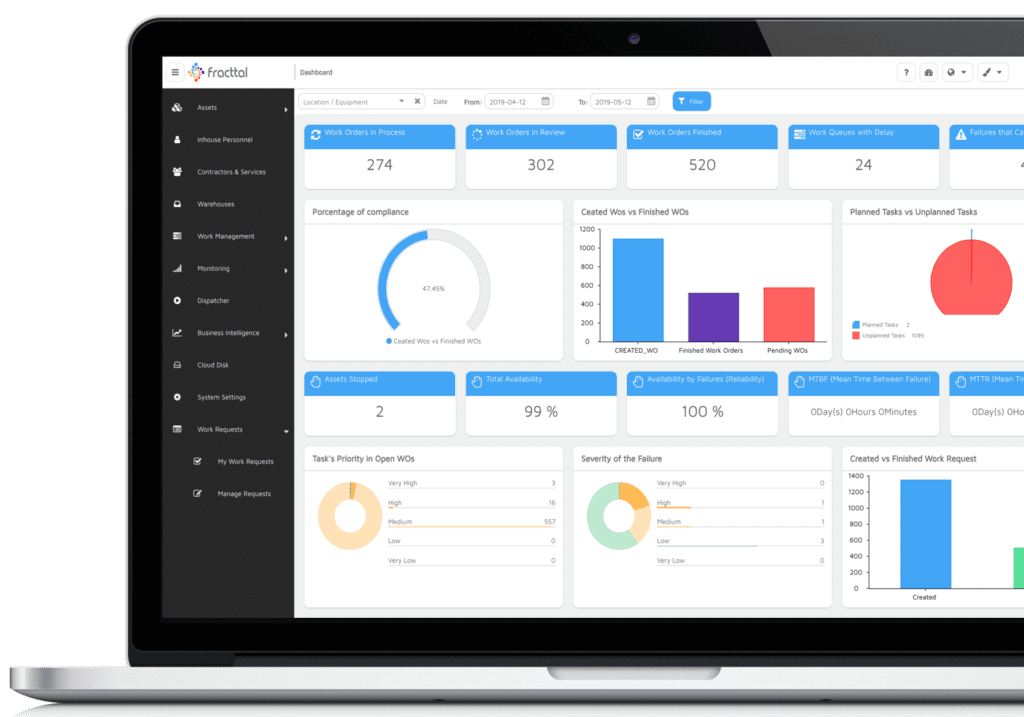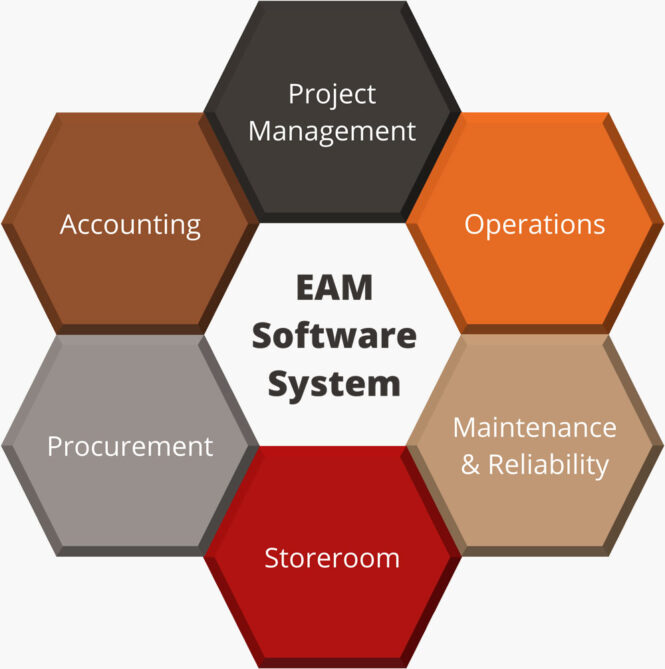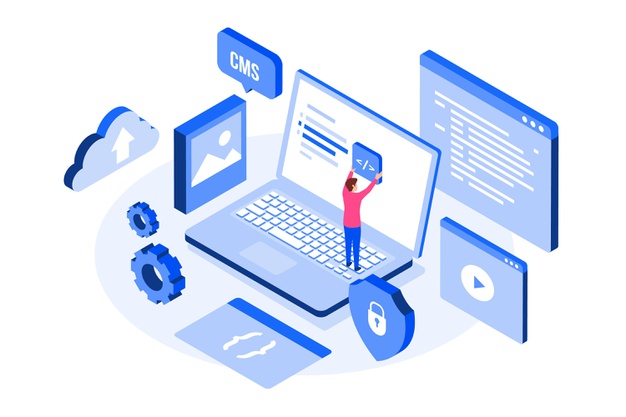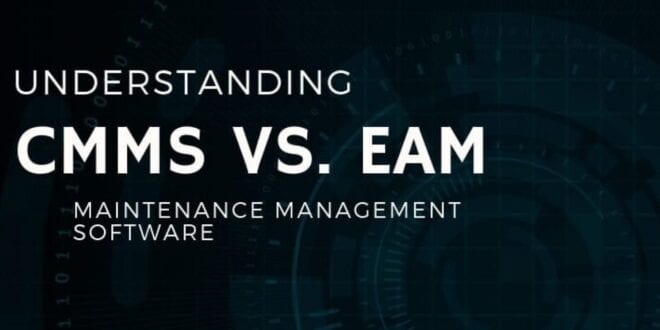If you’re searching for the perfect maintenance and asset management solution for your company, you have probably already come across CMMS and EAM – computerized maintenance management systems and enterprise asset management. These two software types are often presented on the market as equivalents, with the terms used interchangeably. What further adds to the confusion is that many CMMS software advertise themselves as EAMs or CMMS/EAM hybrids.
To help clarify this complex topic of CMMS and EAM systems, we’ll discuss their similarities and differences, the features they entail, and which enterprise application is the ultimate choice for your company’s needs.
What is CMMS?

Computerized maintenance management systems first appeared in the 1960s, but it wasn’t until the 1980s that they emerged as computer systems. Today, most CMMS include preventive maintenance, asset and inventory management, and mobile functionality, as well as additional features of project management, multisite support, and purchasing maintenance, repair, and overhaul parts.
Yet, regardless of the extensive options CMMS now have, maintenance management remains at the heart of these systems. CMMS’s primary roles are maintaining your company’s asset register (through asset details, maintenance records, service management schedule, etc.), streamlining work order management, controlling inventory (e.g. information regarding part numbers, description, supplier, spare parts), and optimizing work processes.
What is EAM?

Enterprise Asset Management focuses on optimizing assets and maximizing their potential. EAM systems are a combination of software, systems, and services used to manage and control company’s assets and equipment, in order to optimize the quality and use of assets throughout their lifecycle, increase productive uptime and lessen operational costs.
Enterprise asset management includes work management, asset maintenance, planning and scheduling, supply chain management, and environmental, health and safety initiatives. These software products represent a single system that holds all the data about the physical assets of a company, such as repair histories, lifecycle costs, warranty records, purchase orders, and more.
As all information about assets is stored in a single system, accessible to all company departments, EAM software stand as unified platforms for handling a company’s resources on the enterprise level.
Ever since their debut in the 1990s, enterprise asset management systems have been used by large corporations with assets on multiple locations. However, lately, even small and medium businesses began resorting to EAMs due to performance optimization and cost management features.
As the majority of EAM solutions offer SaaS (software as a service) deployment, EAM systems became competitive with CMMSs in terms of pricing – not to mention the fact that EAM software offer more comprehensive and streamlined asset management.
CMMS & EAM – Similarities and Differences

Both CMMS and EAM software primarily focus on maintenance, grant a cloud-based subscription, and extra features such as inventory management and asset tracking. Some CMMS systems provide options traditionally found in EAM software, for example, multisite management tools and purchasing modules.
However, even the CMMS with extra features such as the above mentioned still cannot be regarded as an EAM. Enterprise Asset Management software are more robust, comprehensive, and sophisticated compared to CMMS. Whereas all (or majority) EAM systems usually have some CMMS functionalities, CMMSs generally do not boast EAM functionalities.
Both systems serve similar purposes and boast the same functionalities, but EAM systems differ for taking a more comprehensive approach, incorporating multiple business functions, such as project management, procurement, accounting, storeroom, operations, maintenance, and reliability.
An EAM system can track the whole asset lifecycle, and manage multiple sites and businesses, whereas a CMMS system is designed to manage a single location and assets only upon their purchase and installation. A CMMS can be an aspect of EAM that focuses on centralizing information in order to facilitate and automate maintenance management process, whereas EAM supports asset performance from acquisition to disposal.
Businesses that take asset management seriously rely on EAM systems due to their comprehensive, powerful, and unified features This is another reason why representing a CMMS as an EAM system is highly misleading, as the difference between the two is more than just a few extra features – these are two diverse types of software with two distinct approaches to asset optimization and management.
CMMS or EAM -Which Management System Should You Choose?

The notion of asset management is not merely about maintenance, but about all business functions working unitedly. Whether you’ll go with CMMS or EAM mainly depends on your company’s necessities. Whereas for large businesses, multinational companies, and enterprises EAM systems are an obvious choice, the right option for small and medium businesses is not that straightforward.
Many computerized maintenance management systems today include maintenance management and MRO, plus come with a less hefty price tag. CMMS is great for small operations, however, if you plan to expand your business, you’re going to need a tool that can grow with you. Read more about the perfect Enterprise Asset Management solution to streamline your business processes and enhance utilization of assets across your company.
Enterprise asset management systems provide you with a comprehensive approach to asset management that takes into consideration tracking costs, managing resources, and optimizing performance across the entire organization.
 Imagup General Magazine 2024
Imagup General Magazine 2024



